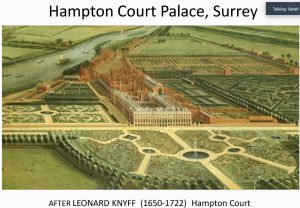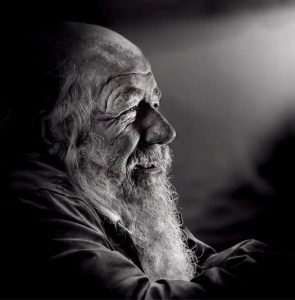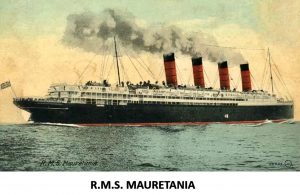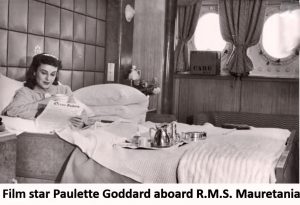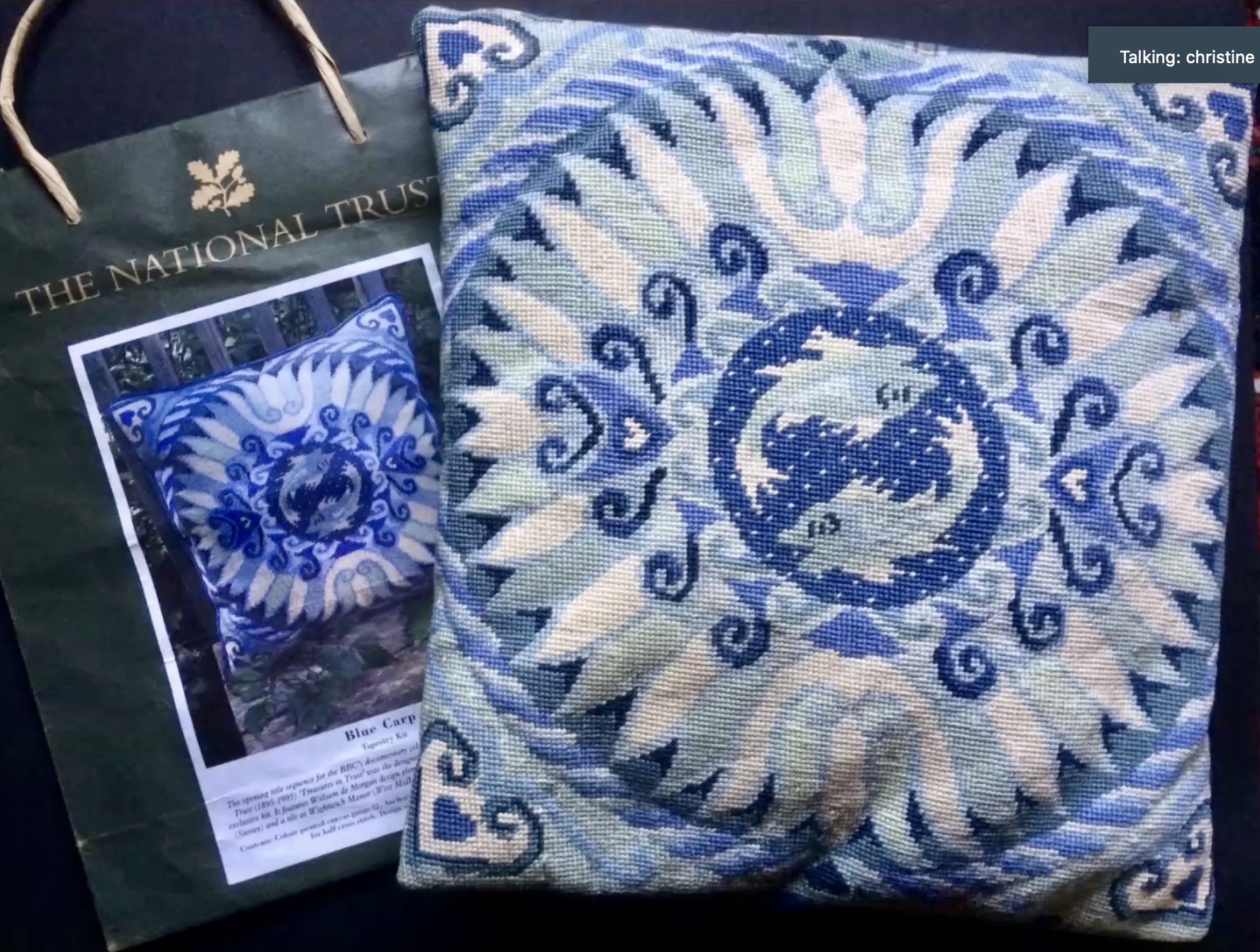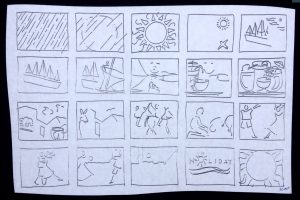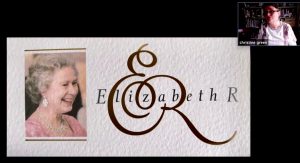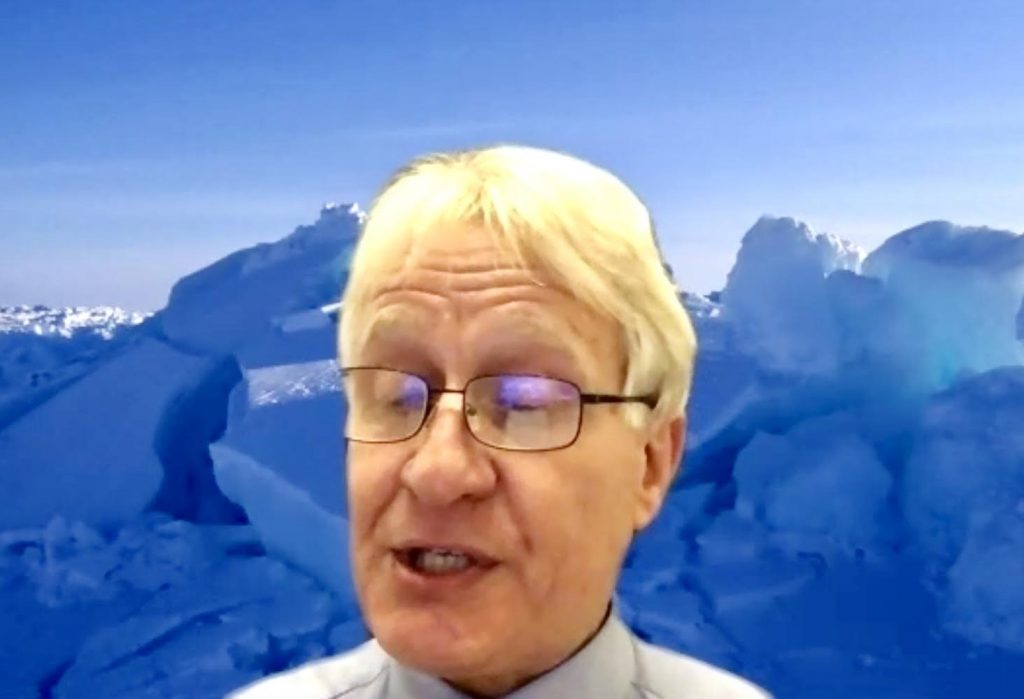December Monthly Meeting Report
A Christmas Presentation
At the December 2021 meeting we were entertained by Phil Rylance and his guitar. He took us on a personal journey through his career in pop music. In the late 50s he bought his first guitar and as a teenager got involved in the world of pop music. He quickly joined a group which was professional enough to go on tour to Germany – something another group did at the time and did rather well (The Beatles). Phil spent some time in Germany and guided us through the German version of Silent Night from the song sheet of carols he provided. He illustrated his talk with many of his favourite songs and performers – particularly the songs of Bobby Darren. By the time he was 18 he was performing 4 nights a week and Phil admitted his A Level performance suffered. However, he recovered later to follow a career in teaching. His students must have had an interesting time in his classes – especially if he brought his guitar into the classroom! David Hale
November Monthly Meeting Report
Paul Robbins – The 60’s A decade of change.
The November meeting was a milestone for the group in that we successfully achieved our first hybrid meeting with members back in the church face to face and others on Zoom. Well done to the technical team for their hard work.
Paul Robbins was the speaker this month with an illustrated presentation outlining the events throughout the 60’s decade. He began by explaining that the 1950s had been a golden age for Britain after the war years. Harold MacMillan’s speech in 1957 summed things up by saying that Britain had never had it so good and there was a rosy future. People in 1960 were looking forward to an exciting future but there were poor areas, with children still playing on bomb sites.
Paul went on to outline events each year of the decade with nostalgic photographs which sparked memories for members. 1960 saw the birth of British pop groups who became the foremost in the world, the Beatles well remembered by everyone. There had been a big Royal wedding with Princess Margaret. Television also grew with more people having access to a TV set. Coronation Street became a revolutionary program which was supposed to be about real life. We started to get programmes from the USA and well known radio programs began to be made for the TV also, like Hancock’s half hour.
Paul went on to further years and notable events: the invention of iconic cars like the E-type Jag and the mini; the first man in space; the start of James Bond movies; the cold snow of 62/63 which brought many things to a standstill; the big event of 1966 when England won the World Cup. Paul concluded the decade with the historic landing of men on the moon. Caroline Winfield
October Monthly Meeting Report
October’s monthly meeting speaker was Brenda Ainsley, a Climate Reality Leader and a u3a Eco leader. She is a member of Cotgrave u3a.
Founded by former Vice President Al Gore in 2005, The Climate Reality Project is a non profit organisation devoted to solving the climate crisis.
Brenda presented a talk explaining the science behind the climate emergency and outlining ways in which we can all ‘make a difference’ for future generations.
Brenda asked and attempted to answer the following questions:
Must we change? Can we change? Will we change?
She outlined the scientific background of what’s going on – why we’re in the situation we are in, and then gave some of the solutions, pointing out that all is not lost but we have to begin to move and move quickly. Many promises have been made but little action taken. She talked about the implications for ‘Third Agers’ and the power we have to make change as individuals and as a group.
Brenda is taking a group of u3a members to COP26 in Glasgow and she has agreed to report back to us (via Zoom) about how things went.
**update – Brenda is going to Zoom with us again sometime in January to tell us about her COP26 experience.
September Monthly Meeting Report
Sarah Slater – Hampton Court Palace guide and lecturer
Secrets, sex, scandal and salacious gossip of the royal court. 1660 – 1830.
September’s monthly meeting speaker was Sarah Slater, a guide at Hampton Court Palace. Her talk gave a fascinating insight to life and happenings in the royal court of the time period 1660 – 1830. Sarah began by explaining that 1660 was a notable time because it was when the royal family were reinstated after Cromwell and was known as the Restoration period. It became a very liberal period and began with all laws being repealed. There was a change in women’s dress, becoming sexier, off the shoulder. A linen shift was worn as the only underwear (no knickers!) and this would show at the neck and sleeves by noble women to show they could have expensive fine linen garments. Hair was pinned up to show the neck and tendrils would frame the face, and pearls as accessories.
Sarah gave a brief resume of the line of succession for this time, through the House of Stuart and House of Hanover. She included little snippets about mistresses and same sex lovers, and illegitimate children, some of whom were recognised others not. The Monarch was usually expected to take lots of mistresses but women to remain faithful and sent to jail if found out.
Also, Sarah gave details about prostitution. A book had been produced of the 120 to 190 ones in Covent Garden with detailed gradings for the gentry. It sold 8000 copies in 1791.Sexual diseases were rife and there were even laws against sex. She also showed some extracts from the 1811 Dictionary of Vulgar Tongue, some with quite different meanings from our use today. She spoke about the dildo and intriguing methods of contraception.
Several members asked questions, one about films/TV productions about this period. Sarah recommended ‘Anne of a Thousand Days’ and the TV drama ‘Harlets’ as two good examples to see. Her presentation had been extremely detailed. Sarah certainly has a lot of knowledge about her subject which she related in an interesting and entertaining way.
July Monthly Meeting Report
Professor Jim Turner – Einstein for us.
The July monthly meeting had Professor Jim Turner as the speaker presenting a talk about ‘Einstein forus.’Jim introduced his talk about Albert Einstein, by saying that his science and theories underlie a lot of modern things, and so is relevant still. He gave some examples like LEDs, Lasers, Sat Navs, Atoms, DNA, Nuclear Fusion (the energy source) and Nuclear Fission and explained how they linked to Einstein’s work. Jim next outlined Einstein’s various roles and how he became so famous and a public figure. This was due to his proving that you could see round corners, because he was able to show that light from a star was bent by the sun and not in a straight line. A solar eclipse in 1919 confirmed Einstein’s theory. Then followed a lot of newspaper articles and interviews, including the New York Times and then a famous conference with many emanant scientists attending.
Jim then talked about Einstein’s visit to Nottingham University’s Physics department in 1930 and that there is still a blackboard on display that he wrote on during his lecture.
Einstein apparently had been a great traveller and whilst in California in 1933 the Nazis, with Hitler, rejected all Jewish science, especially Einstein, and raided his home and burnt papers. At this he renounced his German citizenship andbecame US citizen in 1940. Which was to be Germany’s loss.
Jim also spoke about Einstein’s Theory of special relativelyand correspondence he had with Roosevelt about the nuclear bomb development. He further spoke about Einstein the man, his family and his views on religion and war. Some members said they thought the talk was excellent, others that they liked the historical links in context with other things.

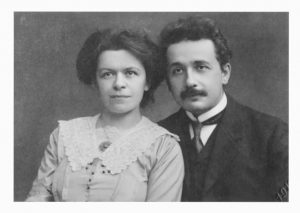
June Monthly Meeting Report
Tony Brewer – People.
Following a successful AGM with 74 members attending on Zoom, Tony Brewer, from Forest Town gave a photographic presentation entitled ‘People’. He presented a range of photographs he had taken over many years of people in a variety of situations, many from re-enactment displays where people were dressed from different centuries, some were of homeless people on the streets, some from holidays in Madeira and Cuba. He explained that he always asked for permission to take the shots and would sometimes give a small amount of money to those homeless on the streets, but 99% would always agree. Tony said that his favourites where to take portraits of people and showed a number in black and white and explained how this brings out texture with detail and lines. He gave a number of tips along the way explaining how he achieved the look of the photo. One important thing was the light and how it lit things, e.g. that it could be used to give a sheen on the face to show the character to a ‘lived in’ face. Tony explained that taking groups of 3, 5, and 7 works well and showed examples. Another point he suggested was to take photos even when it is misty or raining to create a different atmosphere in the picture. He admitted that the camera could lie, and he had some photographs which he had worked on by using photoshop software to create different effects or situations. One technique was colour popping, where a detail would be picked out in red, and the rest would be black and white. He also explained some photos where he had put features from two pictures together. Members enjoyed the presentation and commented on the high standard and quality of Tony’s work.
May Monthly Meeting Report
Steve Herra – Cunard History & Glamorous Stars.
The May monthly meeting had members watching on Zoom for a talk presented by Steve Herra titled Cunard History & Glamorous Stars. Steve was a third generation Cunard employee, following his father and grandmother who had sailed with Cunard. His last ship was the QE2 where he worked as a Purser and had also met his wife. His talk was based on the history of Cunard from 1840 to the present day, during which time they had had nearly 250 liners.
The Cunard story began in 1840 when Samuel Cunard applied to take on the British Government contract to provide the first regular transatlantic steam mail service. He manged to get loans from two men to start his first fleet of 4 ships. Britannia was a first steam/paddle ship, with sails, and went from Liverpool to Halifax, and was also designed to take on passengers. At this time, they carried live cows and chickens for fresh foods. Although Charles Dickens was not impressed with the size of the cabins when he and his wife sailed in 1842.
Steve’s talk went on to describe how over the years with new ships the facilities on board were improved to such an extent that many famous celebrities wanted to travel on them, some of whom he had met. The Mauretania built in 1906, the first of the 4 funnel ships was fitted to give a country house feel at sea. The Aquitania in 1914 was even more luxurious and many stars sailed on her like Bob Hope, The Dolly Sisters, Fred Perry, Anna Pavlova, Charlie Chaplin, Laurel & Hardy and Douglas Fairbanks. As the ships got bigger their headquarters had to move to Southampton from Liverpool.
Steve explained how the Wall Street crash in 1929 caused problems for 1,000s of people and businesses working on the new Queen Mary and led to the merger of Cunard with the White Star Line to secure a loan to finish the building. Again, many stars wanted to travel on her like Liz Taylor, Richard Burton, the Kennedys, Cary Grant, Frances Day. Next was Queen Elizabeth in 1940 which played a role at the end of the war. Unfortunately, with the introduction of flights the number of passengers decreased and eventually they only had the 1968 QE2 left, and then the new Queen Mary, with a new edition due in 2022. Steve had many details and interesting facts to pass on about life on board all the ships, plus a few secrets and incidents. Steve still continued his interest in ships and acted as a visitor escort conducting guided tours of the ships when they were in Southampton, until Coronavirus happened!




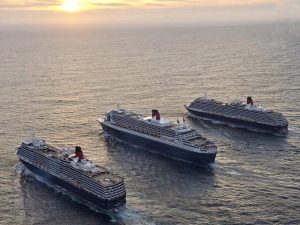

April Monthly Meeting Report
Christine Green – Working for Auntie (BBC)
The April Monthly meeting was well attended again by members on Zoom. The speaker for this month was Christine Green with her presentation about ‘Working for Auntie’, her story of working in the Graphic Design Department of the BBC at Television Centre, Wood Lane, London. From a very young age she had a keen interest in art and craft, even winning an art competition at the age of five. This was not surprising as her father was a graphic designer and mother an art teacher. She regular entered art and craft competitions and sent ideas for projects to children’s programs like Blue Peter, and had fun making short films with her father.
It was after qualifying with a degree from Kingston Polytechnic that Christine secured the job of assistant to graphic designer at the BBC. Her work was very varied over the thirteen years that she worked there, and she name dropped a number of well-known people she had worked with. A lot of her work was creating the introduction graphics for a variety of television programs. She which went on to describe how she started her work with simple story boards and would have different teams of people to work with depending what was required. This was before the digital age,so things were done by drawings, textiles and models etc to create the animation.
Christine’s talk went on to describe her work on a number of programs, with photographs and film clips to illustrate how her work developed to the final version of the introductory graphics that were shown for the program on TV. This was delivered in an extremely interesting way, with some name dropping and funny side quips. Some of the programs Christine had completed work for were; Stories from Marquez, which led on to the graphics for the Holiday Program; Our Friends in the North; Mad About Music for the schools programs; Fire in the Blood; Hamish Macbeth, which involved her buying lots of tartan; The National Trust celebration, from which she created a needlepoint kit to sell in their shops; Island Race; The Queen’s Christmas speech, which led to an invitation to the Palace; Foyles War; Cambridge Spies which was nominated for a Bafta award. Christine went on to do freelance work and to teach crafting courses for some of her favourite projects. She also co-wrote a book about contemporary needlepoint. Many members commented on how much they had enjoyed the talk with memories of the programs mentioned and the good quality of the presentation.
Programme design idea used for glasses case, later shown in a book co-written by Christine.
Design produced by Christine for a programme on the National Trust. She was later asked to create a Needlepoint Kit from the design for the National Trust to sell in their shops.
March Monthly Meeting Report
Beatrice Von Preussen – Arctic and Antarctic expeditions as an artist on board a Science ship.
Another very successful monthly meeting was held on the 3rd March with 69 members joining on Zoom. The speaker was Beatrice Von Preussen, a young artist who had been on both Arctic and Antarctic expeditions with groups of scientists. Beatrice told how her fascination with nature during her childhood led to her artwork starting with pond life. Beatrice became the Artist in residence at Battersea Children’s Park Zoo where she held workshops for children and parents. She became a Science Communicator, which meant she shared knowledge from the experts. Beatrice was invited to a behind the scenes visit to the Natural History Museum where she discovered how scientists and artists had worked together in the past to record details when there had not been any cameras. This interest led her to apply for a place on the expedition to the high Arctic on the USA chartered sail ship Antigua, for which she was sponsored by the Winston Churchill Memorial Fund. The ship sailed from North Norway but the plan to circumnavigate the Arctic was stopped by sea ice. They anchored in the ice and were floating with the ice. Beatrice went on to describe their experiences with 24 hours of daylight, the black sea, the birds and all the noises of the bearded seals below and the crashing of ice. There had been a strong collaboration between all those taking part to spark new ideas. Beatrice showed some of the etchings she had made on opened out emptied boxes like matchboxes, which she had printed when back home. She returned to hold workshops based on the Arctic. (a selection of Beatrice’s photographs and illustrations)
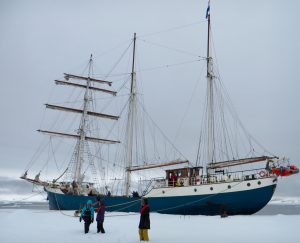
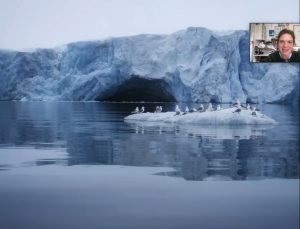

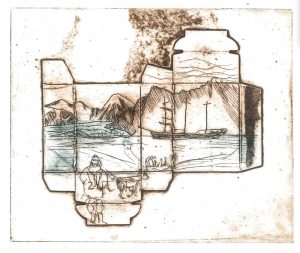
At the beginning of 2019 she was asked to join an expedition to Deception Island in the Antarctic with a team investigating microbial food webs. This took her through the roughest seas across Drakes Passage. The area has a lot of volcanoes which means there are hot spots amongst the cold and the snow and ice are black with ash from them. Beatrice described how uncomfortable they were having to wear huge, male dry suits because of the dangers when getting off the ship, and the weather changing so quickly. One thing that disappointed her was the penguins she had been looking forward to seeing but they just caused the most awful stink and looked quite grubby. Looking to the future Beatrice said that she thinks life is resilient and resourceful to be able to adapt. She had kept us interested throughout with her detailed descriptions and lovely illustrations.
(a selection of Beatrice’s photographs and illustrations)
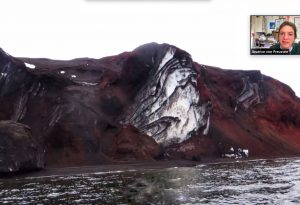
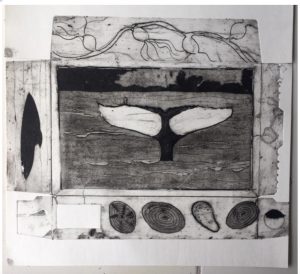


February Monthly Meeting Report
Philip Caine – From Barrow to Bagdad
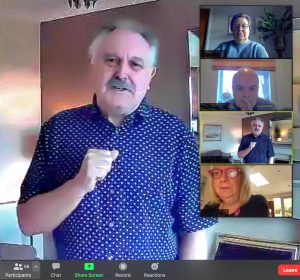
Philip told the story of his working life journey from a schoolboy in Barrow to working contracts in Bagdad. He had left school at 16 with his father expecting him to go to work in the Vickers Armstrong ship building yards but he wanted to work in a hotel. His mother persuaded his father to sign the apprenticeship indentures and so he started his career as a chef. As time progressed, he rose through the ranks and moved on to the Lake District, Harrogate, Cheshire, London and Paris.
After this he moved back home as a manager in Blackburn, and with a young family his wife suggested he worked on the oil rigs, which gave more blocks of social time with family. Again, he explained how he had progressed through many promotions to be on the management team for BP 17 years later.
Looking for something new next he found himself working in Algeria to run a base in the desert. The next move to a contract in Nigeria was to change his direction and involved dealing with members of the Russian KGB. He invested money in a development of his own but lost everything due to the bank collapse and at the age of 50 was a quarter of million dollars in dept. So came the move to Bagdad and a new contract working for the USA military and by 2010 depts had been paid. At 60 he took one last contract and this time with his wife, who had been his great support through all of his career went with him to Dubai. But due to the insurgence of Isis it was back to Barrow.
Philip was restless after such a busy life and again it was his wife with the suggestion of writing. He joined a writing group and at the age of 65 wrote his first book, a thriller, using his experiences. But unable to get publishers interested he set up his own publishing and printing business and now has produced 9 novels.
It was due to giving talks in libraries that he got his first invitation to speak to a u3a group and is now presenting these on a regular basis.
January Monthly Meeting Report
Patsy Rayner – The history of Japanese Gardens
Patsy has been a regular visitor to Japan for over the 23 years and during this time has learnt about the history of Japanese gardens and visited many. In her presentation she covered all aspects of the different styles of gardens and described how they were developed. She illustrated her talk with a vast amount of quality photographs. Members found her talk fascinating, extremely interesting and inspiring.
A selection of Patsy Rayner photographs that illustrate the different styles through the centuries.







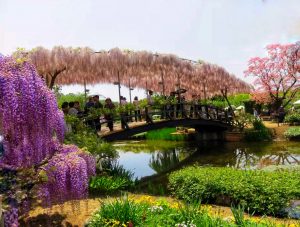
December Monthly Meeting Report
Approx 70 people attended the December Monthly Meeting on Zoom. As Jack Perks was filming for The One Show we had a last minute substitute in Barry Harper who spoke about Crossing the Great Slave Lake.
Barry was a member of the first team to cross the Great Slave Lake in Arctic Canada on skis in temperatures of -55 degrees Centigrade. He gave an excellent talk about the planning, equipment required and the ordeals and adventures on the trek. Our members really enjoyed this talk and there were lots of positive comments:
“That was undoubtedly the best talk we have heard at the u3a absolutely riveting from beginning to end.”
“we did enjoy the talk on his expedition across the ice.”
“I was disappointed Jack Perks couldn’t make it but I SO enjoyed the replacement speaker. He was fantastic. Itwould be good to have him again sometime.”
Press Report – November 2020
Eastwood and District u3a have opened their monthly meetings again!
The first meeting since March was held online via Zoom on 4th November 2020 and approximately 60 members successful joined the meeting. This was a, ‘A Morning with Fool’s Gold’, who are a musical duo based in Durham. Members firstly watched a video of inspirational groups around the country who were enjoying different experiences of meetings mostly online.
Fool’s Gold Zoom Show was a selection of songs which had background stories or histories, which they gave details of as an introduction, with well-presented photographs and illustrations. These were quite varied, starting with a song about a French artist who painted Sedan chairs in the mid 1700s; next was about an American country and western singer who became known as The Sunshine Governor; then they explained the next was about the Menon Memorial Wall; next a well-known song but the story behind it came from a love story in the 1470s, with a love potion made from parsley, sage, rosemary and thyme; they finished with a melody of music hall songs. There show was very well presented and interesting as well as entertaining.
After Fool’s Gold, the interest Groups coordinator outlined the 9 groups that are currently meeting – Art Appreciation, Bird Watching, Book Group, Coffee & co, Coffee Mates, Creative Writing, Family History, French, History of England and Vegetable gardening (not winter months).The Chairman stressed that Eastwood & District u3a is still open for business and still accepting new members at this time when it is important to make contact with people.
Members were then divided into Breakout rooms with 6-7 in each and they had about 25 mins to talk together. Much of the talk for some was about getting groups up and running, possibly on Zoom. The members returned to the main room for the final few minutes and the meeting closed by 11.45 am.
Next meeting is Wednesday 2nd December at 10.00 am on Zoom with a presentation by the well-known wildlife photographer Jack Perks.
Caroline Winfield



